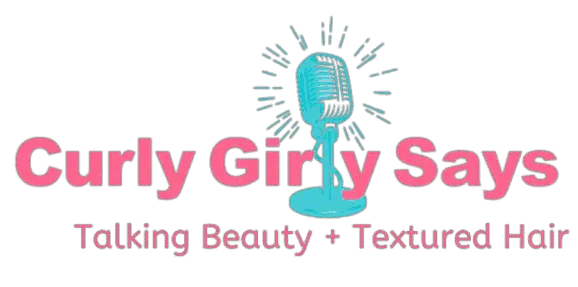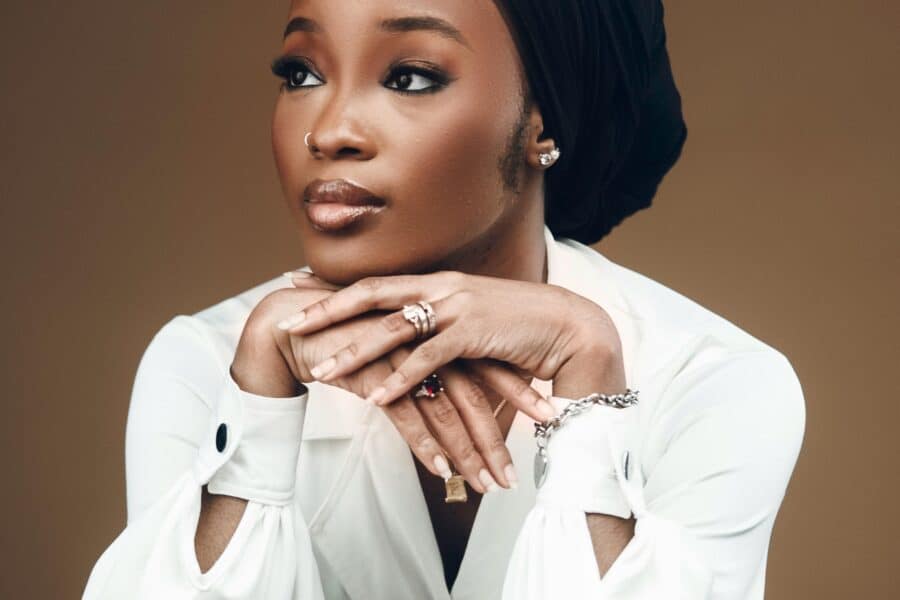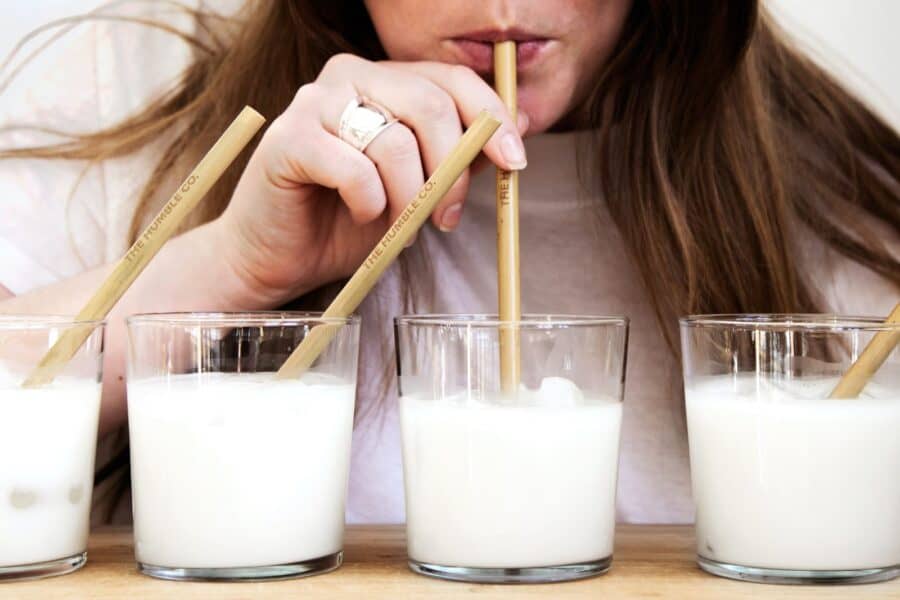Last Updated on May 19, 2025 by Doris Jean
Before we get into how to style wavy hair, let’s talk about the different types of wavy hair. Have you ever looked into the mirror and wondered why your wavy hair may be limp and frizzy? Have you noticed that your hair is straighter when wet but frizzy when dry?
These are signs that your hair is wavy, not curly, and definitely not straight. You might want your hair to be smooth or curly, but why not embrace the mid-zone and cherish your wavy hair?
It is very important to understand the type of wavy hair you have so that you can style it accordingly.
All About Wavy Hair
Wavy hair is a form of curly hair with a ripple-like shape and texture. It has structure and curves, and waves. Wavy hair, in contrast to most curly hairstyles, is softer, nearer to the scalp, and has soft waves at the bottom.
Some have naturally wavy hair but can also be created using various methods. It also works well with a wide range of styles, lengths, and textures. With the right routine and tools, you can turn frizzy, limp wavy hair into wonderfully tousled, beach-worthy waves.
However, you should be familiar with the fundamentals of wavy hair. First, you need to recognize the type of curls you have. Many individuals believe that curly hair only comes in one type. However, there are several varieties of curls, ranging from 2C to 4C hair.
You May Like: Types of Curly Hair
Types of Waves
Wavy hair is the general term for type 2 hair. It’s best defined as slightly curled hair that’s not quite straight. The hair has a natural bounce and substance because of the small S-shaped bends. This hair type is divided into three subcategories: 2A, 2B, and 2C.
Below are the different kinds of wavy hair, so continue reading to discover your curl type now!
2A Hair
This hair type has delicate waves. The waves in this category are a little softer than the other hair kinds. It is manageable, but when paired with the proper haircut, it can create the illusion of fuller, denser strands.
2B Hair
Type 2B hair has a more prominent ‘S’ form, resembling loose beach waves with curls that don’t bounce up. Although the waves are more pronounced when dried, individual strands form an ‘S’ shape with slight frizz.
2C Hair
Type 2C hair is quite wavy, with strands of hair-producing loose spiral curls and a unique ‘S’-shaped pattern. The waves are fuller, thicker, and more challenging to style than other type 2 hair, and they can also be the most frizzy.
11 Tips for How to Style Wavy Hair
Now that you know what type of curls you have, it’s time to get down to business! Here are the top eleven tips for styling your wavy hair!
Use The Correct Shampoo
Your friend’s shampoo and conditioner method might not work for you. Make sure you’re using products that cater to your hair’s specific demands. If your wavy hair is prone to frizz, invest in an anti-frizz shampoo and conditioner.
Choose hydrating shampoos and conditioners if your wavy hair is dry and rough. Also, as type 2 hair produces less natural hair oil, it’s essential to use a sulfate-free shampoo to prevent your hair from losing all of its natural moisture.
Shampoos containing sulfates deplete your hair’s natural oils and moisture, resulting in frizzy and lifeless hair. Hair masks are also effective treatments for dry hair, so pick one up and use it every week.
Remember, the secret to healthy hair is a healthy scalp—and when your scalp isn’t washed correctly, a lot of dirt forms at the roots, compromising the hair’s health. So, even if you don’t shampoo (you may co-wash) every time you wash your hair, we suggest shampooing at least once a week to keep your scalp clean.
Make A Conditioning Treatment A Part of Your Everyday Regimen
If your hair is dry or lackluster, trust us, you would not want to put too much product on it. Just dab a dime-sized dollop of styling product or oil onto your tips to add hydration and bounce.
Don’t touch your hair once you’ve applied your styling products! Wait till it’s entirely dry before moving on. Otherwise, the cast will not fully dry, resulting in frizz and softer waves.
If your curls are usually dry or unmanageable at the ends, you should consider investing in a leave-in cream/conditioner.
Use A Comb with A Wide Tooth
Why? It helps to untangle curly hair. Brushing curly hair dry with a typical bristle brush can damage the hair cuticle since it is so parched and brittle. Therefore, carefully brush out your knot with a wide-tooth comb.
Start at the bottom and work your way up. Always comb your hair upwards from the roots to protect against breakage. If you detangle your hair from the top down, you risk pulling the knots deeper into your hair, resulting in breakage, uncontrolled ends, and frizz.
A better method for dealing with your hair without frizz is gently eliminating knots from the bottom up, one at a time, with your comb.
You May Also Like:
Consider Applying A Moisturizing Mask to Your Hair
Hair mask hydrates without suffocating your curls.
A deep conditioning hair mask applied to your tresses at least once every week will go a long way toward managing frizzy locks, especially if your hair is color-treated.
The “prep” step is vital for developing “juicy curls” that are glossy, bouncy, and frizz-free, just as wearing a primer is for a flawless, long-lasting makeup look.
After you’ve finished conditioning your hair, run cold water through it for a few seconds as it prevents frizz. It helps to close the cuticles, and it’s especially useful if you’ve used a moisturizing mask because the cold water locks everything in place.
Get The Right Hair Cut
There are a lot of tricks to getting the best haircut for naturally wavy hair. For example, you should avoid getting bangs because longer hair looks better than shorter hair, and it’s a fallacy that curly hair requires an expert to cut. These statements are not factual, and you should definitely consult an expert to get the proper cut for your waves, specifically for your hair density.
If you have a cut that doesn’t make the most of your hair type and texture, no amount of maintenance will help. Long, wavy hair, especially when the sections are of the same length, can quickly become weighed down. Layers, on the other hand, might make fine hair appear thinner.
Make an appointment with your hairdresser to receive a haircut that will really bring out the best in your waves, whether they’re natural or not.
Get Rid of That Rough Towel
Curly hair can be dried in a variety of ways, but do not immediately bundle your hair in a towel after stepping out of the shower or bath.
Instead, be patient with the curls by blotting excess moisture with a soft t-shirt, letting it air dry, or using a diffuser if time is of the essence. Diffusers keep curls looking fresh by preventing the frizz caused by blow drying.
Do you ruffle your hair with your towel after a shower? If you do, then stop doing that!
Towel friction can cause breakage, leaving your wavy hair looking frizzy and damaged. Instead, gently squeeze excess water from your hair using a smooth towel or a microfiber towel.
We recommend purchasing a microfiber towel, which will save drying time, absorb extra water, and be gentler on your hair. The abrasiveness of a regular terry towel is simply too harsh, causing your hair to frizz and break out.
Define Your Waves by Drying Your Hair
Try blow-drying your hair with a diffuser if it is naturally wavy. This allows air to circulate, allowing your strands to dry without being pulled down.
A diffuser dries your hair while guiding the airflow so that your curls and waves don’t get messed up. If you don’t have one, you can let your hair air dry and manage frizz with a leave-in cream or a light style product.
To avoid hair damage, use the lowest heat setting when using heat-styling appliances like a hairdryer or a flat iron to style your hair. You can also try this other hair drying technique which is commonly used by many wavy-haired women – ‘plopping.’
Plopping—or drying your curls in a self-contained pile on top of your head with a T-shirt to keep them bouncy and defined—is the trick to clean, formed, frizz-free curls, but your typical terry-cloth towel is the enemy.
Just follow these steps to ‘plop’ like a pro:
- Lay down a t-shirt or a microfibre towel on a level surface.
- Bow down and flip your hair out, allowing the curls to fall onto the t-shirt or towel below.
- Pull the top piece of your t-shirt or towel over the back of your head and down to the nape of your neck.
- Tie the sleeves of your t-shirt around your head if you’re using one. If you’re using a towel to plop, twist and knot the ends. You want to make a turban, but instead of using the traditional “towel twist” (which stretches out curls), you want your strands to dry in their natural state.
- Leave it in for 10-20 minutes before blow drying or letting your hair air dry.
The Pineapple Trick
Many components of your bedtime regimen can be tweaked to help manage frizzy hair. Try the pineapple method to keep your curls from shifting shape while you’re sleeping.
The pineapple trick works on all curl types, from 3a to 4c, and is a simple technique to keep your curls from being pulled out or fuzzed up as you sleep. It’s also, thankfully, simple.
Make a high ponytail with your hair and bind it with a hair tie. Allow your curls to naturally fall to each side, then wrap them in a silk scarf or sleeping hat and retire to your bed. When you wake up and take off the hat and scrunchie, your curls will still be maintained.
To avoid hair fall and ponytail wrinkling and keep your hair looking even more attractive between washes, we suggest using a scrunchie for this method. And, if you haven’t already, now is the time to make the transition to a silk pillowcase!
Avoid Heating Tools
People with Type 2 and 3 hair should avoid using heat styling tools or chemical hair treatments that can harm the cuticle layer of their roots when styling their hair.
Limit your use of styling products such as a curling iron, hairdryer, or straight iron, and keep an eye on the temperature. Look for dry, frayed ends and curls that have lost their shine, as these could indicate that your hair has been damaged by extreme heat. If you must use them, utilize heat-protection treatments to keep your hair safe and free of harm.
When the hair is damp, braiding or twisting it can help it set into a wavy style, while pin curls, sock curls, or Bantu knots can work wonders the following day.
Try Cocktailing Products
Product cocktailing is a curl-defining and curl-managing technique that involves combining two to three leave-in care and style products. For example, a glob of curl cream, a pump of serum, and a spray of lightweight hair gel would be excellent. Start by mixing the items in the palm of your hand before applying.
If you don’t have the time for cocktailing, a serum, which not only smooths your curls but also gives them structure and separation, is your best option for a one-step remedy.
Additionally, you can use wet hands to apply style cream to your hair. The mixture of the product and the water keeps curls frizz-free while rejuvenating the curl pattern, and styling creams are fantastic since they help curls remain in their form without stiffness.
Invest in Good Hair Products
Look at the photographs in the reviews to see if any of the hair looks like yours. High-street companies often have excellent marketing and are less expensive, but if they don’t work, they are still a waste of time and money.
Top-quality goods feature more concentrated substances and have undergone thorough testing to back up their claims.
Check Out: Luxury Hair Products
Extra Tips
- To keep your hair from being stripped of its natural oils and drying out, use natural shampoos that are sulfate-free.
- To prevent your curls from heat damage, avoid straightening your tresses as much as possible.
- Sleep with a silk or satin pillowcase to keep your curls from breaking or drying out during the night.
- To keep your curls defined between washes, tie your hair in a loop bun on top of your head and cover it with a silk scarf or cap. This is known as the Pineapple technique.
- People with type 3 curly hair may use the Liquid-Oil-Cream regimen to keep their curls suitably hydrated. This procedure requires you to use a moisturizing shampoo and conditioner regularly, treat your hair with natural oil, and apply a curl-defining cream to shape the curls.
Conclusion
There you have it! The 11 styling tips for wavy hair! If you have curly hair, you should go for a style that emphasizes your curls and adds definition to them. Whatever style you choose, keep in mind that it’s crucial to find one that makes you feel powerful and at ease.
So don’t be frightened to try new things! We hope this article helped you understand the different types of wavy hair and how to style wavy hair.














Leave a Comment